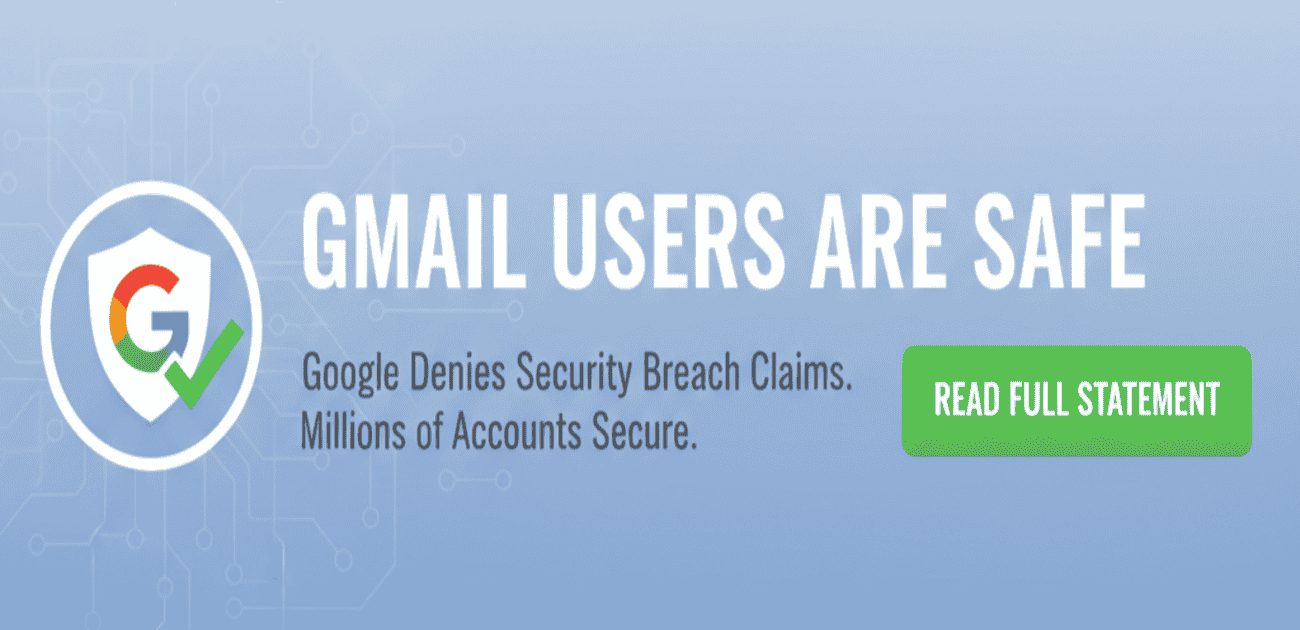Tech giant clarifies misinformation about alleged Gmail breach, confirms no infrastructure compromise occurred
⚠️ CYBERSECURITY CLARIFICATION ALERT ⚠️
October 28, 2025 – Mountain View, California
Google officially denies claims of Gmail security breach affecting millions
Misinformation stems from misinterpretation of existing credential leak databases
Gmail infrastructure remains secure with no evidence of widespread compromise
KEY FACTS
- Google Status: Firmly denies Gmail breach claims as unfounded
- Infrastructure Security: No evidence of Gmail system compromise
- Misinformation Source: Misinterpretation of infostealer malware databases
- User Impact: No widespread Gmail account compromise confirmed
- Security Measures: Advanced encryption and real-time monitoring active
- Official Response: Google Twitter account confirms Gmail defenses remain strong
MISINFORMATION ANALYSIS & CLARIFICATION
False Breach Claims
As of October 28, 2025, Google has firmly denied claims of a massive Gmail security breach affecting millions of users. The tech giant emphasized that its email service remains secure, with no evidence of a widespread compromise occurring within their infrastructure.
The misinformation appears to stem from a misinterpretation of existing data leaks involving stolen credentials from various online sources, rather than a direct breach of Google’s Gmail systems.
Social Media Panic
Social media and online forums buzzed with alarm earlier this week after reports surfaced suggesting that hackers had accessed Gmail accounts. Users panicked, sharing stories of potential data exposure and urging immediate password changes across platforms.
However, Google’s security team clarified that these claims are unfounded, attributing the confusion to the nature of infostealer malware databases that aggregate stolen login details from countless websites, not just Gmail.
Infostealer Database Confusion
Infostealer tools, often deployed by cybercriminals, scrape credentials from infected devices worldwide. These databases aggregate stolen login details from countless websites, creating the illusion of targeted attacks when large compilations of such data are publicized without proper context.
The recent buzz likely arose from a large compilation of such data being publicized, creating the false impression of a targeted Gmail attack. Experts note this is a common tactic in the cybercrime ecosystem, where old and new breaches get bundled together without proper attribution or context.
GOOGLE’S OFFICIAL RESPONSE
Google’s statement highlighted that no new vulnerability or breach specifically targeting Gmail infrastructure occurred. The company’s robust defenses, including advanced encryption and real-time monitoring, continue to safeguard user accounts effectively.
Reports of a “Gmail security breach impacting millions of users” are false. Gmail’s defenses are strong, and users remain protected. 🧵👇
— News from Google (@NewsFromGoogle) October 27, 2025
The tech giant took to social media to address the confusion directly, confirming that Gmail’s defenses remain strong and users are protected from any security threats.
This isn’t the first time such misunderstandings have fueled unnecessary fear; similar false alarms have popped up with other major platforms in the past, highlighting the importance of verified information in an era of rapid digital news cycles.
SECURITY MEASURES & RECOMMENDATIONS
Google’s Security Infrastructure
Google maintains multiple layers of security protection for Gmail users, including advanced encryption protocols, real-time threat monitoring, and automated detection systems that identify suspicious account activity patterns.
The company actively monitors for large-scale credential exposures and notifies affected users, often automating password resets where possible to prevent unauthorized access attempts.
User Protection Recommendations
To counter credential theft risks, Google recommends enabling 2-step verification on all accounts, which adds an extra layer of protection beyond passwords. The company is also pushing passkeys as a phishing-resistant alternative, allowing seamless logins via biometrics or device security.
For those whose credentials appear in leaked batches, resetting passwords promptly is crucial. Users should also regularly review their account security settings and enable additional verification methods.
EXPERT OPINIONS
Cybersecurity experts emphasize the importance of distinguishing between actual security breaches and credential leaks from third-party sources. The confusion surrounding this incident highlights the need for better public education about different types of cybersecurity threats.
Security researchers note that infostealer malware databases often contain credentials from multiple sources, making it difficult to determine the original breach source. This complexity can lead to misinterpretation when such data is publicized without proper context.
Industry professionals stress the importance of verified information sources and recommend that users rely on official company communications rather than social media rumors when evaluating security threats.
FUTURE OUTLOOK
As cybersecurity threats evolve, distinguishing hype from reality becomes essential for both users and organizations. Google’s reassurance underscores the importance of verified information in an era of rapid digital news cycles and social media amplification.
The incident highlights the ongoing challenge of misinformation in cybersecurity reporting, where legitimate concerns about credential theft can be misinterpreted as direct platform breaches, causing unnecessary panic among users.
CRITICAL RECOMMENDATIONS
For Gmail Users:
- Enable 2-Step Verification: Add an extra layer of security to your Google account
- Use Passkeys: Consider switching to biometric or device-based authentication
- Regular Security Reviews: Check your account security settings monthly
- Password Management: Use unique, strong passwords for all accounts
For Organizations:
- Employee Education: Train staff to identify credible security information sources
- Incident Response: Develop protocols for handling security misinformation
- Communication Strategy: Establish clear channels for security updates
- Verification Processes: Implement fact-checking procedures for security claims
For Security Professionals:
- Context Matters: Always provide proper context when reporting credential leaks
- Source Attribution: Clearly identify the original source of compromised data
- Impact Assessment: Distinguish between different types of security incidents
- Public Education: Help users understand various cybersecurity threat types
RESOURCES AND REPORTING
Google Security Resources:
- Google Account Security: myaccount.google.com/security
- Gmail Security Help: support.google.com/mail/answer/45938
- 2-Step Verification Setup: support.google.com/accounts/answer/185839
Credential Monitoring:
- Have I Been Pwned: haveibeenpwned.com
- Google Password Checkup: Built into Chrome browser
- Regular security audits of all online accounts
Reporting: Users should report suspicious account activity directly to Google through their official security channels.
RELATED ARTICLES
Stay informed about the latest cybersecurity threats and clarifications:
- AI Phishing Attacks Surge 300% in US – CISA Issues Emergency Alert
- BREAKING: Deepfake Fraud Surges 1200% in US – FBI Issues Emergency Alert
- BREAKING: AT&T Data Breach Affects 73 Million Customers – FBI Issues Alert
Source: Google Official Communications & Security Research
Cybersecurity Expert | DevOps Engineer
Founder and lead author at CyberUpdates365. Specializing in DevSecOps, cloud security, and threat intelligence. My mission is to make cybersecurity knowledge accessible through practical, easy-to-implement guidance. Strong believer in continuous learning and community-driven security awareness.


Leave a Reply